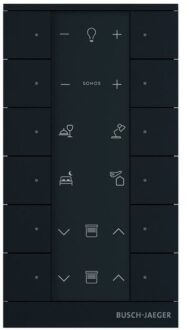
90 years of triaxial method – 25 years of partnership bda connectivity – Rosenberger Hochfrequenztechnik
For the determination of the transfer impedance for cable shields, the triaxial method has been in use for 90 years now. The measurement of the transfer impedance was first mentioned by Sergei Alexander Schelkunoff in the early 1930s. Since then, the triaxial method has been further developed and is still one of the predominant methods and is used worldwide.
A further description of the transfer impedance of various cable shield constructions including a triaxial test method can be found 1936 by Heinz Ochem. In the 1950s, Heinrich Kaden describes the electromagnetic characteristics of cables and components, including transfer impedance.* In 1961, John Zorzy and R.F. Mühlenberger describe the measurement of transfer impedance using the triaxial method up to 7.5 GHz. The transfer impedance of cable shields is usually measured as a length-related quantity in milliOhm per meter (mOhm/m).
With the introduction of cable television, there is a demand to measure the screening attenuation of the coaxial cables (CATV cables) used here as a decibel value (dB) up to 1000 MHz instead of the transfer impedance in mOhm/m. This is done by means of absorbing clamps. For this purpose, the method with absorbing clamps was already introduced in the 1970s and 1980s.**
Lauri Halme develops the summing function and the coupling transfer function of cable screens in 1987. Halme and Breitenbach recognize that the maximum values of the resonances in the triaxial measuring tube at higher frequencies represent the screening attenuation. On this basis, Otto Breitenbach, together with Thomas Hähner, extends the triaxial method for measuring screening attenuation in the frequency range from approx. 30 MHz onwards. Under the direction of Bernhard Mund, bda connectivity (formerly bedea Berkenhoff & Drebes GmbH) participates in this extension of the triaxial method and introduces some mechanical improvements compared to the measuring tubes commonly used until then. These include the remote measuring head as well as clamping techniques for connecting the test objects at the near and far ends. This greatly simplifies the installation of the test specimen in the measuring tube.
Although the CoMeT measurement system is initially only developed at bda connectivity for its own laboratory application, the first interested parties soon contact bda connectivity; including a well-known German testing and certification institute and the Telecommunications Central Office FTZ of the German Bundespost. This resulted in the need for professional production of the CoMeT system by a qualified manufacturer, which is found in Rosenberger Hochfrequenztechnik GmbH & Co. KG, Fridolfing. Thus, already a quarter of a century ago, in 1997, in the field of triaxial measurement methods for EMC measurement, the successful cooperation of the companies Rosenberger Hochfrequenztechnik GmbH & Co. KG, Fridolfing and bda connectivity GmbH, Asslar, starts.
On the basis of the prototypes of bda connectivity, the first series of the measuring tube CoMeT (Coupling Measuring Tube) is manufactured at Rosenberger in 1997 in cooperation with the chief designer of Rosenberger, Mr. Eberhard Rodig, and the R&D manager at bda connectivity, Mr. Bernhard Mund.
Since then, the CoMeT system has been extended to other test parameters, such as the coupling attenuation aC of symmetrical cables and assemblies or the EMC measurement of larger components, e.g. connectors and cable assemblies for electric vehicles with the "Triaxial Cell". The various triaxial measurement methods for different applications are described in international standards such as IEC 62153-4-n.
The presentation of the CoMeT system in 1998 at the IEC General Meeting in Houston, Texas, represents a milestone for the successful introduction of the measurement of screening effectiveness with the triaxial method on an international level, followed by another highlight: the inclusion of the triaxial method in the worldwide standard IEC 61196-1 for the measurement of screening attenuation aS up to and beyond 3 GHz (1999). Further pioneers for the successful CoMeT "flight" are the description of the measurement of the coupling attenuation of symmetrical cables with the triaxial method in IEC 62153-4-9Ed1 (2000), the standardization as a measurement method for transfer impedance and screening attenuation in EN 50289-1-6 (2002)*** and the introduction of the screening classes for CATV cables in EN 50117 and IEC 61196 series. Manufacturers of CATV cables must prove the screening classes to the Central Office for Approvals in Telecommunications, (ZZF).
The "tube-in-tube" method according to IEC 62153-4-7 supplements the methods for measuring transfer impedance and screening attenuation on cable shields to the measurement of connectors and cable assemblies (2002).
In 2006, Thomas Schmid presents the CoMeT-K system, developed together with Michael Wollitzer, for measuring EMC gaskets and EMC feedthroughs, standardized as IEC 62153-4-10. In 2008, Ralf Damm takes over the worldwide CoMeT sales activities at bda connectivity.
Larger components such as HV connecting cables and connectors for electric vehicles or CATV tap offs require the extension of the CoMeT system to triaxial cells according to IEC 62153-4-15 (2010). With the extension of IEC 62153-4-9Amd1 to measure the coupling attenuation of unscreened balanced pairs, the triaxial method is recognized as a reference method on an international level (2018).
Advantages of the triaxial method over other methods include the closed measurement setup, the wide measurement bandwidth of DC up to approx. 9 GHz (CoMeT 40) or 20 GHz (CoMeT 18) and the high measurement sensitivity. A significant advantage is also that both the transfer impedance and the screening- or coupling attenuation can be measured with only one measurement setup.
With the Triaxial CoMeT System, bda connectivity is the global market leader in measuring the screening effectiveness of cables, connectors and components.
The cooperation in the field of EMC measurement with the CoMeT measurement system between bda connectivity GmbH and Rosenberger meanwhile extends to the further development of the theoretical basics, the practical optimization of the CoMeT system including new applications as well as the revision of the corresponding international standards. Employees of bda connectivity and Rosenberger are members of various committees and working groups in the Technical Committee IEC TC 46, Communication Cables & High Frequency Connectors. This also includes the joint preparation and presentation of technical lectures and technical papers, e.g. ****
- Higher order mode suppression in Triaxial Cells, IWCS 2016
- Balunless measurement of coupling attenuation of screened balanced cables up to 2 GHz, IWCS 2015
- EMC of Cables, Connectors and Assembled Cables Using the Triaxial Method, Anwenderkongress Steckverbinder 2019
- EMC of ready-made connecting devices (RMCD), IWCS 2020
- Screening effectiveness of unscreened balanced pairs, EMC 2019, EMV 2020
- EMC parameters of single-pair ethernet cables, ITG-Fachtagung Kommunikationskabelnetze 2021
- EMC of Single Pair Ethernet Cables, Wire & Cable Technology International 2022
- EMC parameters of SPE cables and connectors, Anwenderkongress Steckverbinder 2022, Würzburg
The extremely successful cooperation between the two companies in the field of EMC measurement technology can be expressed in figures as follows:
- 25 years of excellent collaboration
- Development of the basic system CoMeT 40 and the software WinCoMeT as well as further developments:
- CoMeT 90
- CoMeT 18
- Tube-in-tube
- CoMeT-K
- Triaxial cell
- Accessories
- 405 sold CoMeT systems, thereof 356 comet tubes and 49 triaxial cells
- Hundreds of satisfied customers in the field of industry for communication cables, testing institutes and EMC laboratories, automotive industry.
In October 2022, representatives of bda connectivity and Rosenberger Hochfrequenztechnik met for their annual review meeting in Fridolfing. Here, the 25 years of cooperation were acknowledged and celebrated, but also the current situation and future objectives were discussed. Among other things, these goals are being addressed in the cooperation:
- Measuring adapters for various applications, e.g.HFM, SPE, RMC
- Adaptation to future technologies and end-use applications, such as automotive, e-mobility, etc.
"We hope that the joint activities of both companies can continue for a long time to develop the technology for further applications," says Bernhard Mund, responsible for EMC test engineering and standardization at bda connectivity. And Thomas Schmid, head of EMC test laboratory at Rosenberger Hochfrequenztechnik, adds, "With increasing expansion of wireless technologies, IoT, e-mobility, etc., the potential applications of the triaxial procedure will tend to increase." And that, in turn, lays the foundation for many more productive years of collaboration.
*(Eddy currents and shielding in communications engineering)
**(e.g. Spatz, Hildebrand, Ditscheid et al. DKE-UK 412.3)
***(meanwhile withdrawn)
**** (for download on the bda website https://bda-connectivity.com)
bda connectivity GmbH
Herborner Strasse 61A
35614 Asslar
Telefon: +49 (6441) 38452-00
https://www.bda-connectivity.com
![]()




